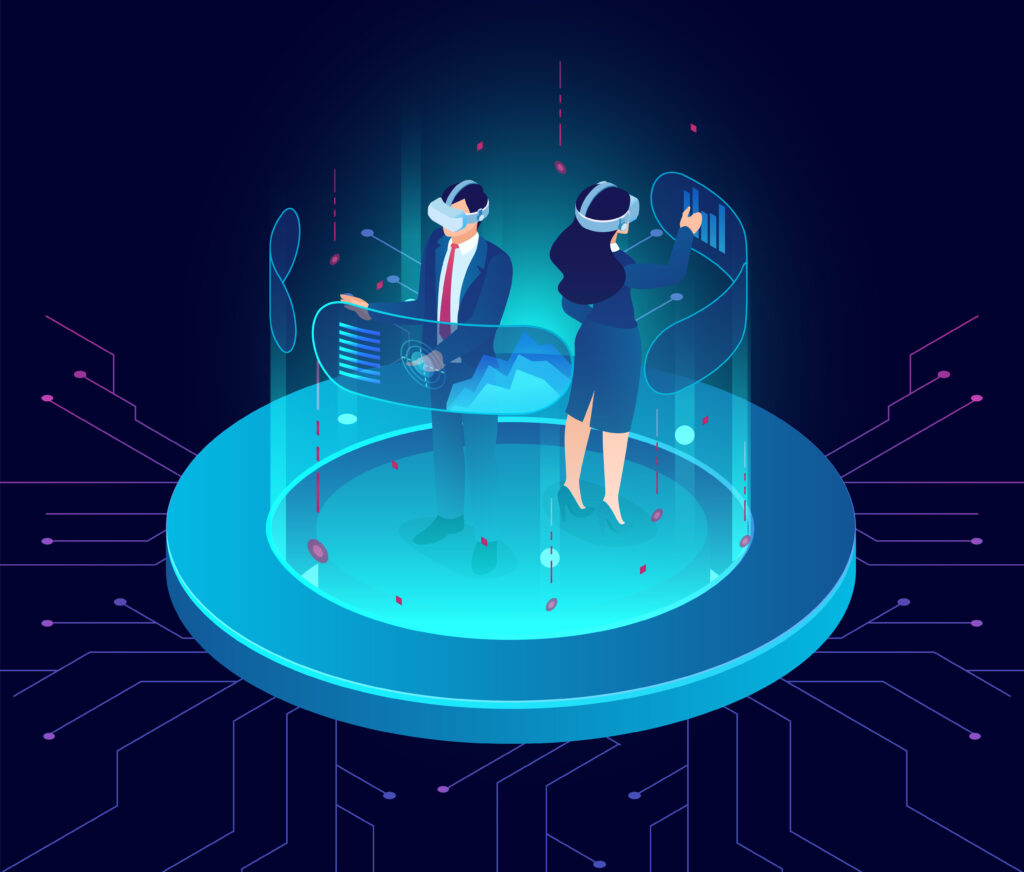For
those of us who don’t always have time to keep up with tech trends, here’s a
rundown of the most event-elevating immersives and how best to evaluate them.
The term
immersive is big and a little woolly. This isn’t surprising as it has to cover
a wide gamut that encompasses both emotional and technological aspects. For our
purposes, we’ll define it as creating a compelling digital environment or
experience for users that enhances or replaces reality.
Let’s start
plumbing the depths by identifying the main types of immersive technology. And,
as seeing is believing, we’ve included some fascinating examples…
- Virtual Reality (VR). This is the oldest and most established of the breed which focuses on simulating an environment (ranging from realistic to fantastic). Users are immersed in the simulated experience but interactions between the users and the virtual environment are wholly digital. One stunning example is the Paris Louvre’s VR experience featuring the world’s most famous portrait: ‘Mona Lisa: Beyond the Glass’. For a practical corporate application, take a look at Hilton’s use of VR for upskilling many thousands of its hotel staff .
- Augmented Reality (AR). Here, computer technology captures the actual environment of users through sophisticated sensors and cameras, then adds visual and/or sound elements to enhance the user experience. With an overlay of digital content over real world views, the user can see the overlay but are unable to physically pick up or walk 360º around it. A great example of this is the game Pokemon Go game which was a craze when it was launched. A popular variant of AR technology is Projection Mapping used in large public areas. The launch event, A Night of Disney+ held in Singapore is a spectacular example.
- Mixed Reality (MR). With this technology, the visual and sound sensory overlay is achieved in 3D space, enabling users to interact with the elements – by walking around, zooming-in, handling objects etc. Medical education is a field where MR is seeing increasing use.
- Extended reality (XR). Not really a specific type, XR is a general term for technology that merges the simulated and physical worlds to different degrees, using all the current available techniques. Think of it as a mix of VR, AR and MR. See a useful taster by Spatial.io here.
So now we know what all the Rs are about, how do you judge which ones are worth shortlisting for your event? As usual, the starting point is to ask some basic questions…
5. Aims and Audience
- What’s the main objective? Can you express it as a story that can be conveyed effectively via one of the Rs?
- Who’s your target audience? Are they internal or external stakeholders or both? This will affect their attitude to embracing what is still an unusual communications medium.
- What is the number of users who will be experiencing the event at any one time? This may impact on technology capacity.
- What is the likely duration of the immersive experience? This will impact your event planning and factors such as the comfort of users – some people can feel disoriented if the experience is too long.
6. Collaboration among users
- If collaboration is required, you will need a system capable of running a multi-user experience.
- You may wish to include a gamification element in your event – a well-proven method of creating user engagement.
7. Budget for equipment and immersive content development
- Will your event be web-based?
- Will it need to run from a personal computer, tablet or mobile phone?
- What headsets/glasses will be suitable? Top choices include: Oculus Quest, Hololens 2, Nreal, Trimble XR10 operate with HoloLens 2 , Magic Leap and Vuzix M100.
8.Type of venue
- Will it be outdoors or indoors? Temperature will affect the battery life of equipment.)
- Will it be static in a confined space or moving through a large space.
- What is the availability and capacity of the wifi and internet connection?
- Is there sufficient power supply to drive the equipment?
9. Use of content
- Will the immersive experience be one-off or repeated? Is it possible to repurpose or modify the content for different uses and platforms? For example, event content could be used for internal training, for sales and marketing, or in showrooms and retail environments.
10. Hygiene considerations
- With today’s acute awareness of the importance of hygiene, you need to ensure that all your chosen equipment is easy to disinfect. One effective method is to use a UVC disinfection cabinet for headsets and shared devices.
You will need to weigh up multifarious factors before taking your first steps into the world of immersive technology and applying it to your event. But do your homework well and the results can be exciting and productive.





